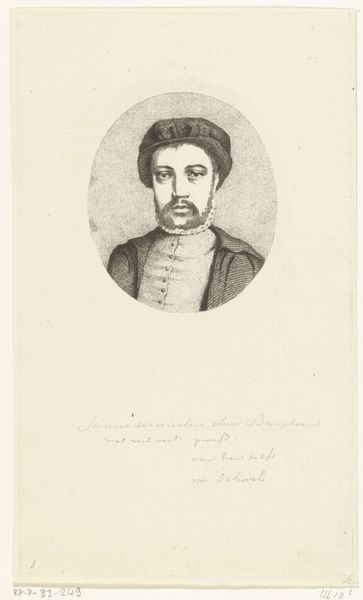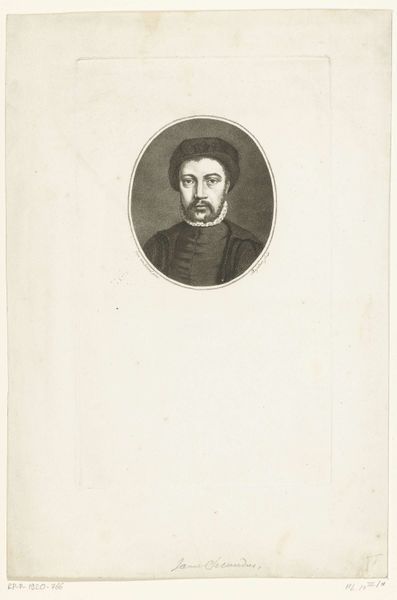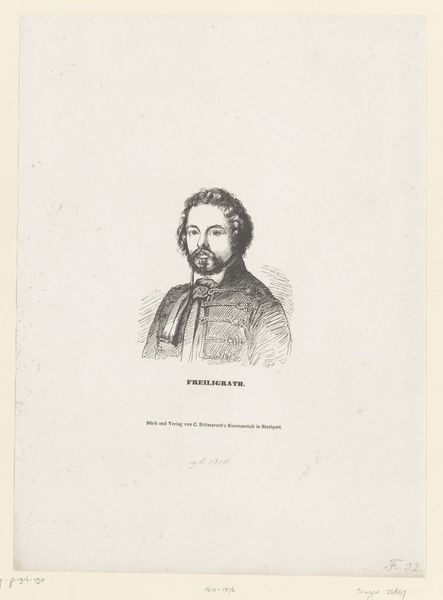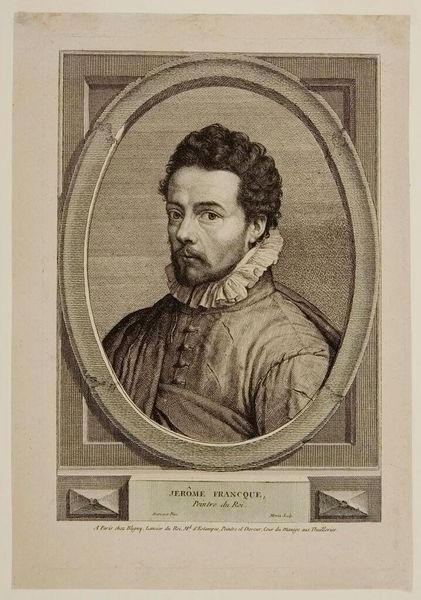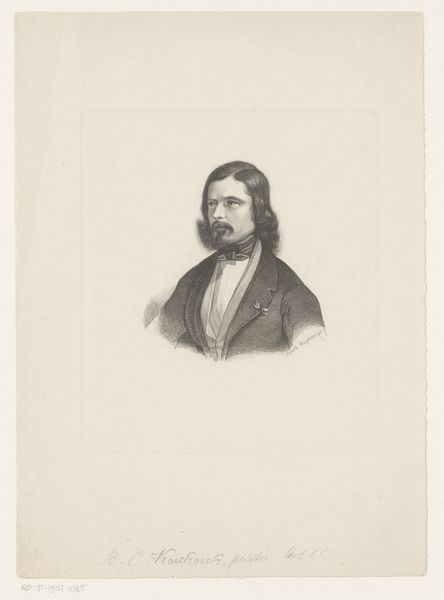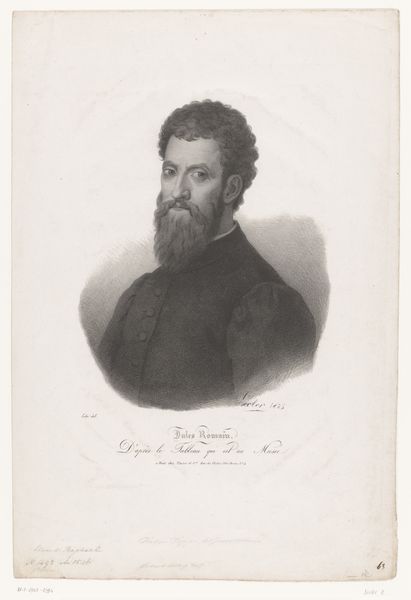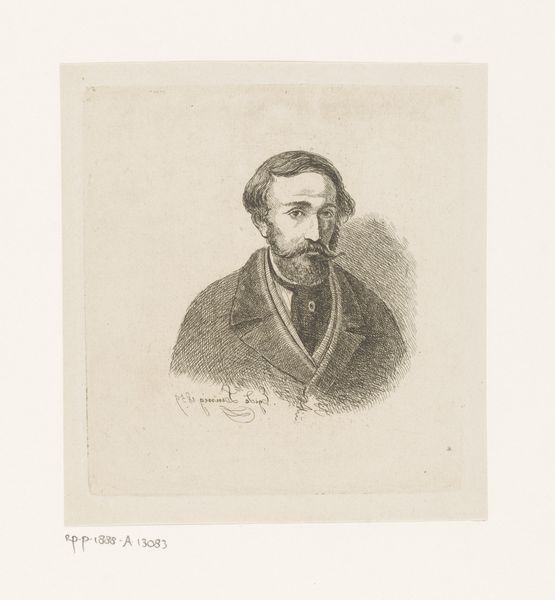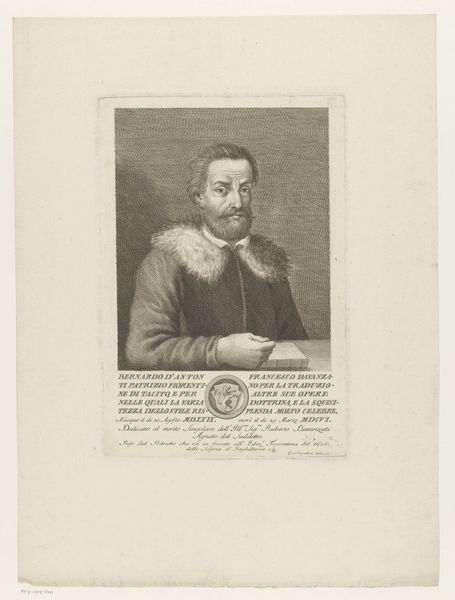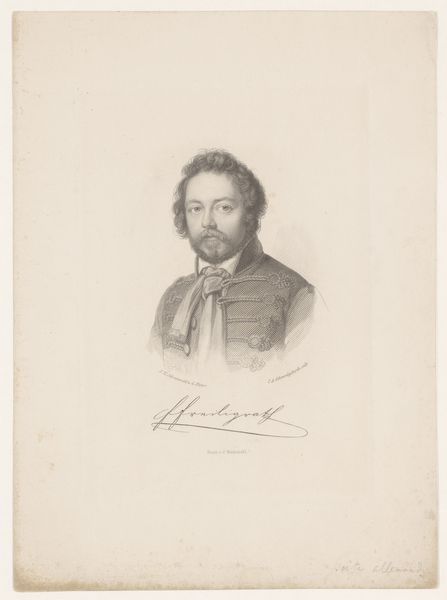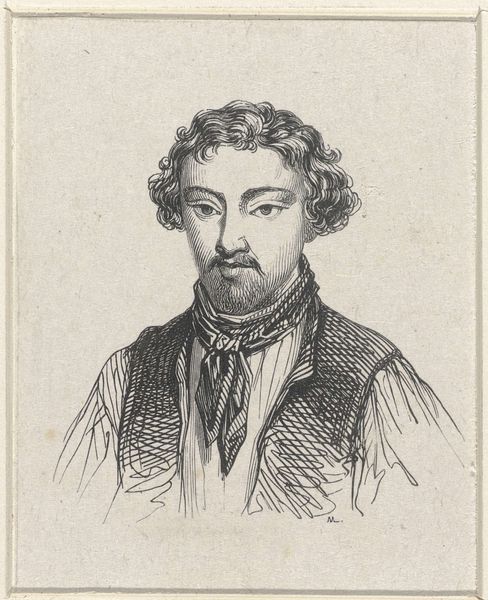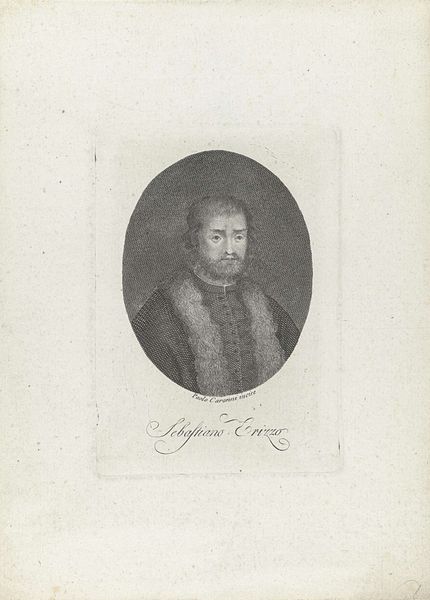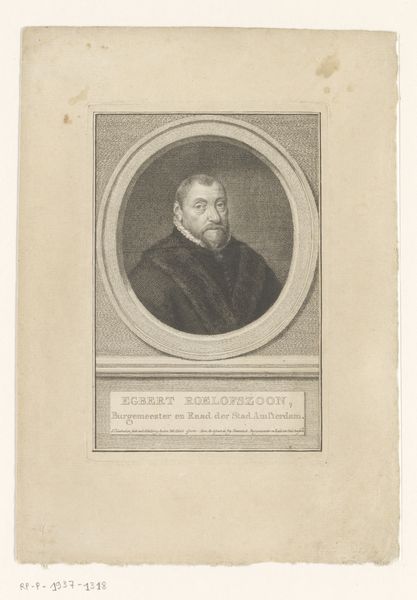
print, etching, engraving
#
portrait
# print
#
etching
#
history-painting
#
engraving
#
realism
Dimensions: height 234 mm, width 140 mm
Copyright: Rijks Museum: Open Domain
Editor: This is "Portret van Janus Secundus" by Ernst Willem Jan Bagelaar, made sometime between 1798 and 1837. It's an engraving and etching, a print of a portrait, and something about it feels…almost official. I wonder, what can you tell me about its place in history? Curator: Well, let’s consider the period in which this was made, between 1798 and 1837. This was a time of significant upheaval in Europe, revolutions, and shifting power dynamics. A portrait like this, especially as a print, takes on a very different context. Who was Janus Secundus, and why would someone choose to create and disseminate his image during this era? Editor: I think I read something about him being a poet… So maybe this print was a way of preserving and circulating his memory during a turbulent time? Curator: Exactly! Prints like this served a vital role in shaping public memory and establishing cultural heroes. The choice to depict Secundus in this specific manner – the style of dress, the somber expression – what kind of message do you think Bagelaar, and potentially those who commissioned the work, intended to convey? Editor: Perhaps to portray Secundus as a figure of intellectual authority, someone to be respected and emulated during a time of uncertainty? The portrait format itself seems to lend itself to the sense of respectability, and perhaps even a touch of idealization. Curator: Precisely. And think about the very act of creating a print – making something reproducible, democratizing the image. It allowed for wider access and a potentially greater influence than a unique painting. It's about the politics of imagery – who gets remembered and how they are remembered. The choices behind reproducing an image carry specific messages. Editor: I hadn’t considered the power of printmaking in that context before. So, the image is not just about Secundus, but also about the values and aims of those circulating his image in that period. It makes you question, whose version of history are we seeing? Curator: Indeed! Reflecting on this artwork together highlights that remembering involves powerful, public roles in our history.
Comments
No comments
Be the first to comment and join the conversation on the ultimate creative platform.
